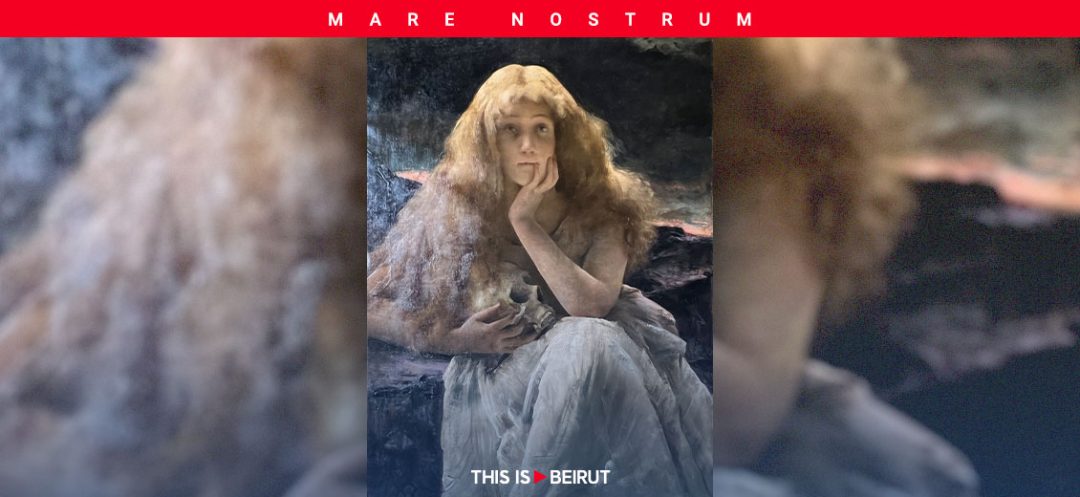Listen to the article
It is with a vibrant tribute, bursting with life and passion, that the Petit Palais celebrates the centenary of the death of the incomparable Sarah Bernhardt, an exceptional tragedienne whose aura pierced through the velvet of theatres to touch the souls of her contemporaries. This key figure of the French artistic world, described as “the Divine” by Oscar Wilde, “the voice of gold” by Victor Hugo, a “strange creature who enchants and bewitches” according to Freud, and a “sacred monster” according to Jean Cocteau, continues to enlighten our minds thanks to the exhibition devoted to her. With over 400 works on display, visitors can explore the many facets of this exceptional woman: an incomparably talented actress, a shrewd businesswoman, a marketing pioneer, a fervent activist and a multi-faceted artist. Beyond her immense theatrical career, the exhibition also highlights her artistic output as a painter and sculptor, as well as her social commitment, a testament to her daring and indomitable will. Visitors to this exceptional exhibition will be taken on a journey to the heart of Sarah Bernhardt’s fascinating world, and will leave with an overwhelming sense of emotion. Each work, each document, each objet d’art recounts a part of this extraordinary woman’s life, demonstrating that she was a beacon of French culture and, even today, remains France’s greatest artist, for her eccentricities and her unparalleled talent.

The roots of a tragedienne
Sarah Bernhardt was born in the depths of the Parisian demi-monde in 1844, the product of a mother who placed her in a convent and a father whose identity remains obscure. In the shadow of this humble and painful background, the child – turning away from mysticism – took flight, guided by an unfailing determination. “Even so” is the motto of her life, which will enable her to overcome the trials of fate.
Faced with her mother’s indifference, Sarah found refuge in her imagination, fomenting the beginnings of her future vocation. At just 13, she entered the Conservatoire de Musique, taking her first steps on the stage. Despite her young age, her stage presence and captivating voice never fail to impress. The young tragedienne’s talent was soon recognised by French theatres, and in 1862 Sarah made her debut at the Comédie Française. But the rigid rules of this illustrious institution soon clashed with the rebellious spirit of the young woman, who decided to take flight and shine on her own. This decision marked the beginning of an exceptional theatrical career and a life full of challenges overcome with courage and determination.
The French actress who conquered the world
Unforgettable, Sarah Bernhardt quickly conquered the Paris stage and became a veritable rising star of the theatre. She played with consuming passion the greatest roles in the dramatic repertoire, from classical tragedies to modern plays, embracing characters as diverse as Phèdre, Médée, Lady Macbeth, Joan of Arc and the Lady of the Camellias. She did not hesitate to defy the norms of the time, even playing male roles such as L’Aiglon and Lorenzaccio. Her performance in “Le Passant”, in which she cross-dressed as a man, remains one of her most daring interpretations. The sumptuous costumes she wore as Cleopatra are a wonderful illustration of the richness of her repertoire.
Sarah Bernhardt’s aura was not limited to France. She embraced the idea of international tours very early on, popularising French culture and luxury throughout the world. Aboard a specially equipped Pullman train, she criss-crossed America and the five continents. Her name, now inseparable from theatrical excellence, is as well known as that of the Eiffel Tower. For her cultural influence, she was awarded the Légion d’honneur in 1914, a rare distinction for a woman at the time.
Bernhardt’s fame even extended beyond the theatre. She became an icon of the nascent advertising industry, lending her image to products ranging from rice powder and absinthe to LU biscuits. Her fame and reputation led her to become director of the Théâtre des Nations in 1899, which she naturally renamed the “Théâtre Sarah Bernhardt”. For fifteen years, she played nearly forty roles and presented twenty-five new plays.
Her eccentricities were as famous as her talent on stage. She cultivated a singular image and dared to defy the conventions of her time. Her taste for the strange and morbid added a special touch to her extraordinary personality. Among the most notorious was her interest in exotic animals. She owned a pet alligator named Ali-Gaga, who tragically died of an overdose of milk and champagne. This passion for unusual animals contributed to her reputation as a whimsical and eccentric artist, so much so that she consulted a doctor to find out whether it was possible to graft a tiger’s tail onto her kidneys!
Sarah Bernhardt was also fascinated by death and had a certain taste for the morbid. She used to sleep in a coffin to practise dying, and she never hesitated to have her photograph taken inside it. This fascination with death was also reflected in her choice of roles on stage, particularly when playing tragic characters such as Ophelia in Hamlet.
The other side of the Divine: Sarah Bernhardt, painter and sculptor
Beyond her stage virtuosity, Sarah Bernhardt’s artistic talents extended to painting and sculpture. These little-known facets of her personality are particularly highlighted in the exhibition at the Petit Palais. This “Divine” was not only an outstanding actress, she was also a complete artist, relishing the brush as much as the chisel. The exhibition reveals works of art created by Sarah’s hand, testifying to her dexterity and artistic sensibility. At her home in Belle-Île-en-Mer, she finds an inexhaustible source of inspiration in nature, creating paintings and sculptures inspired by seaweed. In Paris, she sculpted touching busts of her loved ones, confirming her ability to capture the human essence. At the Salon of 1876, a jealous Rodin declared: “This sculpture is a piece of shit!” and Zola retorted: “Let’s pass a law right now to prevent the accumulation of talent.”
Sarah Bernhardt’s artistic talents were little known, yet she exhibited some of her work at the 1900 Universal Exhibition, receiving praise for her mastery and creativity. As a painter and sculptor, she displays the same passion and commitment that characterise her as an actress, demonstrating once again her innate talent for art in all its forms.
In rediscovering Sarah Bernhardt through her visual work – and this is certainly the biggest surprise in this exhibition – we are surprised by the versatility of this exceptional artist. It confirms that her greatness was not limited to her stage presence, but extended to an impressive range of artistic expressions.
Sarah the immortal
Sarah Bernhardt, a passionate and charismatic woman, was surrounded by many of the great personalities of her time. She cultivated romantic relationships with men and women who left their mark on their time. These included the famous writer Victor Hugo, who nicknamed her the “Golden Voice”, and the Prince of Wales, the future King Edward VII, with whom she shared a tempestuous affair.
Beyond her turbulent love life, she was a committed artist and a woman of action. She took a stand on the burning social and political issues of her time. She openly supported the anarchist Louise Michel after the Paris Commune and fiercely opposed the death penalty. During the Dreyfus affair in 1894, she supported Émile Zola and expressed her indignation at injustice.
Despite health problems, Sarah Bernhardt continued to perform on stage with unwavering energy and determination. In 1915, her right leg was amputated due to bone tuberculosis, but this did not stop her from going to the front to support French soldiers during the First World War. Nothing stopped her, and she continued to perform on stage, “just the same.”
The last years of her life were marked by worldwide recognition of her talent and her contribution to art and culture. Her funeral, which took place in 1923, was grandiose, reflecting the extent of her fame. Huge crowds lined the streets of Paris to pay their last respects, as the funeral cortege moved slowly, covered in flowers, towards the Père Lachaise cemetery, where she is buried.
Sarah Bernhardt’s life is that of an exceptional woman who left her mark on her era through her artistic talent, her passionate commitment and her indomitable determination. Her artistic legacy and influence live on to this day, and the exhibition at the Petit Palais offers a unique opportunity to plunge into the fascinating world of this icon of theatre and culture. A visit to this exhibition or the purchase of its catalogue is a vibrant tribute to this great lady of the arts and an invitation to discover the full richness of her career.
Don’t miss this opportunity to immerse yourself into Bernhardt’s unique world and explore the many facets of her talent. Whether you visit the exhibition or buy the catalogue, let yourself be carried away by the grandeur and audacity of Sarah Bernhardt, an exceptional artist who continues to shine in the pantheon of the great names in the history of art.
Edited by Stéphanie Cantarutti and Cécilie Champy, Sarah Bernhardt: et la femme créa la star, Paris-Musées, 19/04/2023, 1 vol. (255 p.), €39 – Exhibition at the Petit Palais until 27 August 2023.














